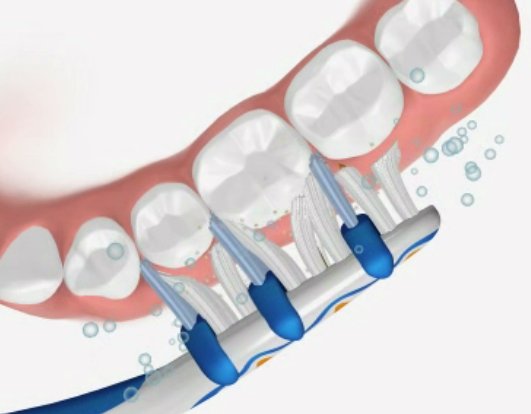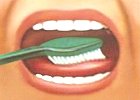
How to Brush your Teeth
Regular tooth brushing is very important in preventing tooth decay and gum disease. Brushing your teeth removes the bacteria of dental plaque that promote tooth decay and that can cause gum disease.
The effectiveness of the toothbrushing cleaning depends on the way we brush our teeth. If we do not brush correctly, not only bacterial plaque remains on our teeth increasing the risk of tooth decay but we can also damage to the tooth enamel.
The Importance of Proper Tooth Brushing
Brushing teeth is a simple task, but lots of people brush their teeth incorrectly, either skipping around so much that they don't really clean anything, or rubbing so hard that they actually damage their teeth and gums.
No matter how good you try to brush your teeth, some bacteria will always be left behind. The growth of dental plaque starts again the moment you stop brushing your teeth and remove the toothbrush from your mouth. You should be very careful to use proper toothbrushing techniques so that the number of bacteria left behind will be the lowest possible.
Ask from your dentist or dental hygienist to teach you the correct tooth brushing method.
How to Brush Your Teeth - Proper Way to Brush Teeth
Use a toothbrush with soft nylon bristles and small size head so that it can comfortably reach and clean the back teeth.
Put a pea size quantity of toothpaste on the toothbrush bristles.
 |
Place your toothbrush next to the teeth so that it rests on the gumline (the point where the teeth and the gums meet) , forming a 45 degrees angle against teeth and gums. |
 |
Start from the external side of teeth brushing with small back-and-forth movements. The movements must be gentle and short covering 2-3 teeth at the most. After a few second move to the next teeth after you have brushed them all in both jaws. |
 |
Brush with the same way the internal (lingual) side of teeth in both jaws. If you have a proble of gag reflex when trying to brush back teeth, try a toothbrush with smaller head. |
 |
Put the toothbrush vertically and brush with with up-and-down motions the inside surfaces of the front teeth. Pay attention to clean the inside of the down front teeth that have the tendency to accumulate more calculus (tartar). |
 |
Brush the chewing surfaces of teeth with short back-and-forth motions. Do not neglect to clean the back side of the last molars. |
 |
Brush your tongue to remove bacteria and food residuals that cause bad breath. |
Finally, rinse your mouth well to remove the foam of the toothbrush with any food and bacteria residuals it may contain.
If you are using an electic toothbrush, a different brushing technique is required..
How Long to Brush Teeth
For toothbrushing to be effective, it must last at least 2 minutes. If you are not sure for how long you brush your teeth, use a timer for a few days.
- If it lasts less than 2 minutes, you do not brush enough to clean your teeth ptoperly.
- If it takes more than 3 minutes, then you possibly exaggerate.
When to Brush Teeth
Dentists suggest that we must brush our teeth at least twice a day and one of them must be before we go to bed at night.
An older theory suggested that we should brush immediately after each meal, and especially if we eat sweets, but research has shown that our mouth environment is very acidic for the first minutes after meal and brushing could cause permanent damage (demineralization) to the tooth enamel. So, it is safer to brush at least half an hour after a meal.
Recent research has shown that 2 proper brushings a day may be enough to safely stop the growth of bacterial plaque. More brushings did not show significant difference in reducing the accumulation of plaque and tartar, but increased the risk of gum recession.
Tips for Better Teeth Cleaning
- Brush your tongue, removing the bacteria that cause bad breath will freshen your breath. Use a tongue scraper if you do not feel comfortable cleaning your tongue with your toothbrush. If you have a bad breath problem, brushing the roof of your mouth might also help.
- When you brush your teeth, you remove most of the plaque-causing bacteria. But some stay behind. These bacteria can set up a colony and begin damaging your teeth within 24 hours--which is why dentists recommend brushing twice a day to consistently interrupt their growth.
- After finishing brushing your teeth, you can check if you have effectively removed dental plaque by using disclosing tablets.
- Avoid the use of hard toothbrushes. Do not use too much force while brushing teeth. In both cases you could cause abrasions to the tooth enamel or dentin, that could lead to tooth sensitivity problems.
- A correct brushing must have a duration of 2 to 3 minutes.
- After brushing teeth use dental floss to complete your dental hygiene.
Daily oral hygiene is essential for maintaining oral health. It should also be combined with proper healthy diet and regular dental visits.

